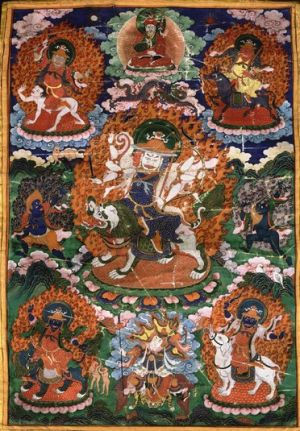The Agamas
Agama, (Sanskrit: “tradition” or “received knowledge”) post-Vedic scripture conveying ritual knowledge and considered to have been revealed by a personal divinity. Shaivite scriptures, dating probably to the 8th century, are particularly so designated, in contrast to the Vaishnava Samhitas and the Shakta Tantras. (Compare Shaivism, Vaishnavism, and Shaktism.) The Agamas are often in the form of a dialogue between Shiva and his wife Parvati.
For convenience, scholars discuss the texts according to the four Shaivite branches that follow the Agamic tradition. These are the Sanskrit school of Shaiva-siddhanta, the Tamil Shaivas, the Kashmir Shaivas, and the Lingayats, who are also known as the Virashaivas. The Agamas provide a considerable amount of information on the earliest codes of temple building, image making, and religious procedure.
Smriti, (Sanskrit: “Recollection”) that class of Hindu sacred literature based on human memory, as distinct from the Vedas, which are considered to be Shruti (literally “What Is Heard”), or the product of divine revelation. Smriti literature elaborates, interprets, and codifies Vedic thought but, being derivative, is considered less authoritative than the Vedic Shruti. Most modern Hindus, however, have a
greater familiarity with Smriti scriptures. The texts include the important religious manuals known as the Kalpa-sutras; the compilations of ancient myth, legends, and history, the Puranas; and the two great epics of India, the Ramayana and the Mahabharata. The latter contains within it probably the single most influential text in Hinduism, the Bhagavadgita. In time the term Smriti came to refer particularly to the texts relating to law and social conduct, such as the celebrated lawbook, the Manu-smriti (Laws of Manu).
